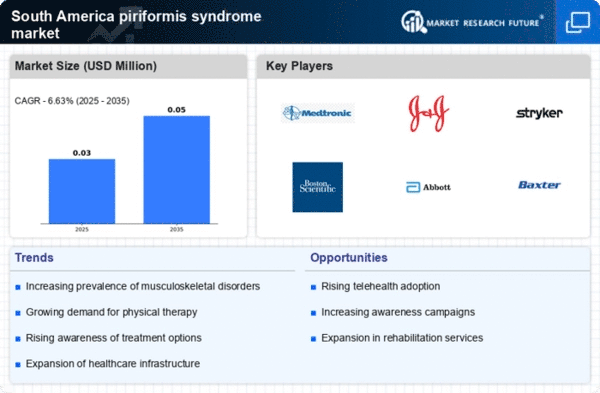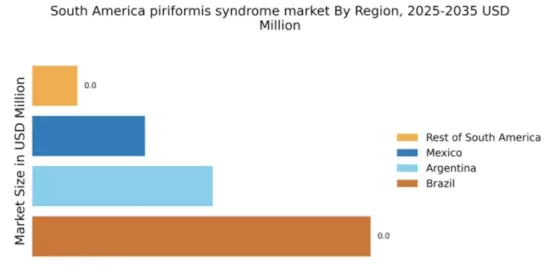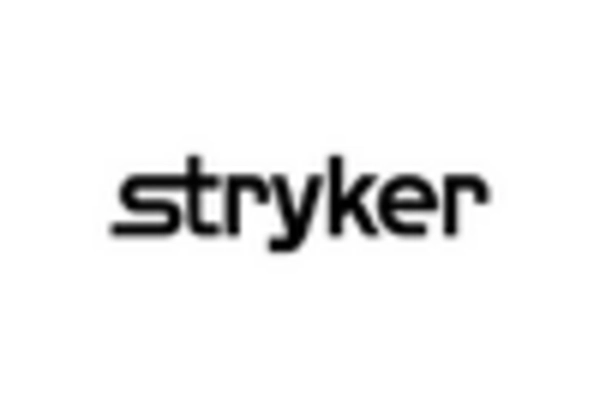Expansion of Healthcare Infrastructure
The expansion of healthcare infrastructure in South America plays a significant role in the growth of the piriformis syndrome market. Governments and private sectors are investing in healthcare facilities, which enhances access to medical services for patients suffering from piriformis syndrome. Improved healthcare infrastructure facilitates better diagnosis and treatment options, leading to an increase in patient consultations. For instance, the number of physiotherapy clinics has risen by approximately 15% in urban areas, providing more avenues for treatment. This expansion not only improves patient outcomes but also stimulates market growth as more individuals seek specialized care for their conditions.
Increased Focus on Preventive Healthcare
The increased focus on preventive healthcare in South America is influencing the piriformis syndrome market. As healthcare systems shift towards preventive measures, there is a growing emphasis on education and awareness regarding musculoskeletal health. Initiatives aimed at promoting physical activity and ergonomic practices are becoming more prevalent, potentially reducing the incidence of conditions like piriformis syndrome. This proactive approach may lead to a decrease in treatment costs and a more informed patient population. Consequently, the market could see a shift in demand towards preventive solutions, which may reshape the landscape of the piriformis syndrome market.
Technological Advancements in Diagnostic Tools
Technological advancements in diagnostic tools are significantly impacting the piriformis syndrome market in South America. Innovations such as advanced imaging techniques, including MRI and ultrasound, are enhancing the accuracy of diagnoses. These tools allow healthcare professionals to identify piriformis syndrome more effectively, leading to timely and appropriate treatment. The integration of telemedicine is also facilitating remote consultations, making it easier for patients to access specialized care. As diagnostic capabilities improve, the market is likely to experience growth, as more individuals are diagnosed and treated for piriformis syndrome, thereby increasing the overall demand for related healthcare services.
Rising Demand for Non-Invasive Treatment Options
There is a notable shift towards non-invasive treatment options for conditions like piriformis syndrome in South America. Patients increasingly prefer therapies such as physical therapy, chiropractic care, and acupuncture over surgical interventions. This trend is driven by a growing awareness of the risks associated with invasive procedures and a desire for quicker recovery times. The piriformis syndrome market is likely to benefit from this shift, as non-invasive treatments are often more cost-effective, appealing to a broader demographic. Market data suggests that non-invasive therapies could account for up to 60% of the treatment options sought by patients, indicating a substantial opportunity for growth.
Increasing Incidence of Musculoskeletal Disorders
The rising incidence of musculoskeletal disorders in South America is a crucial driver for the piriformis syndrome market. As the population ages, the prevalence of conditions such as piriformis syndrome is expected to increase. Reports indicate that approximately 20% of adults in South America experience some form of musculoskeletal pain, which may lead to a higher demand for diagnostic and therapeutic options related to piriformis syndrome. This trend suggests that healthcare providers will need to focus on effective management strategies, thereby expanding the piriformis syndrome market. Furthermore, the growing awareness of the link between musculoskeletal disorders and lifestyle factors may prompt more individuals to seek treatment, further driving market growth.


















Leave a Comment